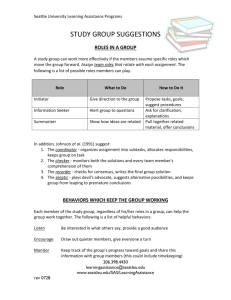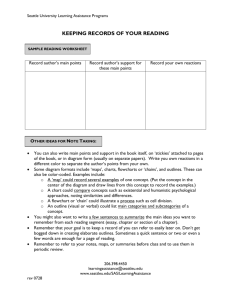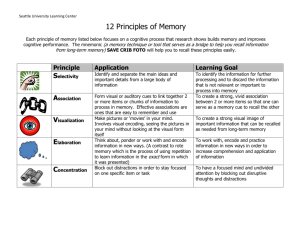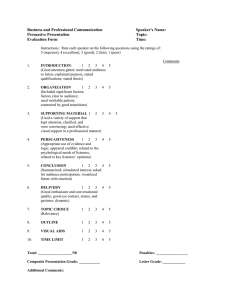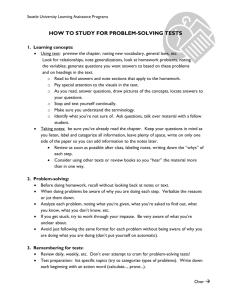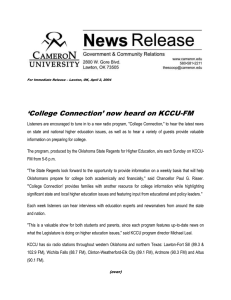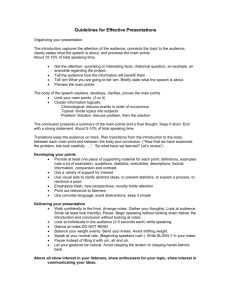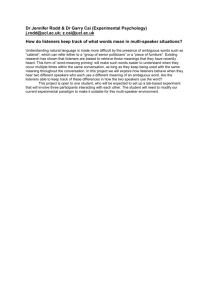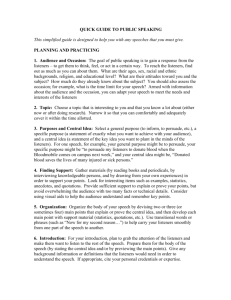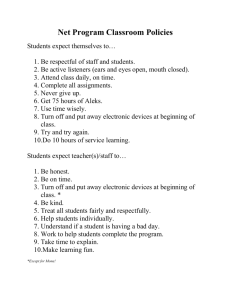Giving Class Presentations
advertisement
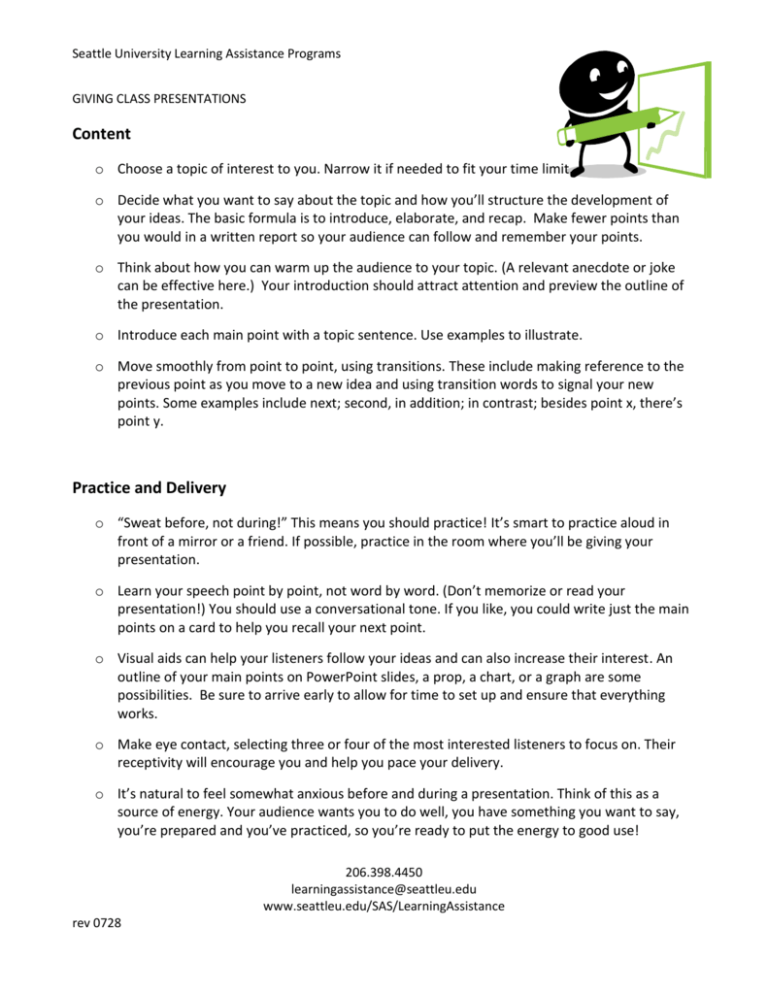
Seattle University Learning Assistance Programs GIVING CLASS PRESENTATIONS Content o Choose a topic of interest to you. Narrow it if needed to fit your time limit. o Decide what you want to say about the topic and how you’ll structure the development of your ideas. The basic formula is to introduce, elaborate, and recap. Make fewer points than you would in a written report so your audience can follow and remember your points. o Think about how you can warm up the audience to your topic. (A relevant anecdote or joke can be effective here.) Your introduction should attract attention and preview the outline of the presentation. o Introduce each main point with a topic sentence. Use examples to illustrate. o Move smoothly from point to point, using transitions. These include making reference to the previous point as you move to a new idea and using transition words to signal your new points. Some examples include next; second, in addition; in contrast; besides point x, there’s point y. Practice and Delivery o “Sweat before, not during!” This means you should practice! It’s smart to practice aloud in front of a mirror or a friend. If possible, practice in the room where you’ll be giving your presentation. o Learn your speech point by point, not word by word. (Don’t memorize or read your presentation!) You should use a conversational tone. If you like, you could write just the main points on a card to help you recall your next point. o Visual aids can help your listeners follow your ideas and can also increase their interest. An outline of your main points on PowerPoint slides, a prop, a chart, or a graph are some possibilities. Be sure to arrive early to allow for time to set up and ensure that everything works. o Make eye contact, selecting three or four of the most interested listeners to focus on. Their receptivity will encourage you and help you pace your delivery. o It’s natural to feel somewhat anxious before and during a presentation. Think of this as a source of energy. Your audience wants you to do well, you have something you want to say, you’re prepared and you’ve practiced, so you’re ready to put the energy to good use! 206.398.4450 learningassistance@seattleu.edu www.seattleu.edu/SAS/LearningAssistance rev 0728
